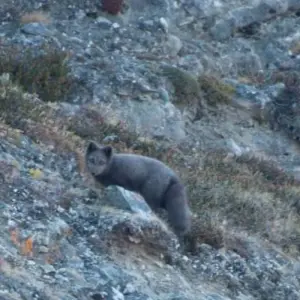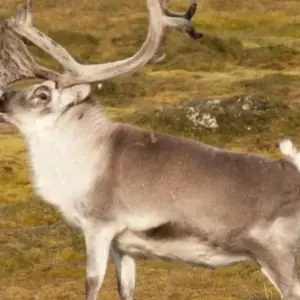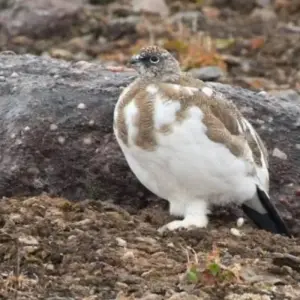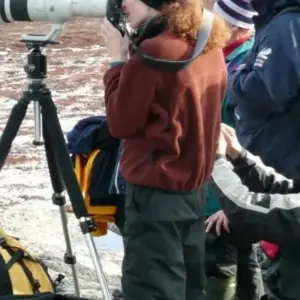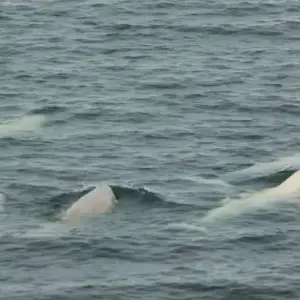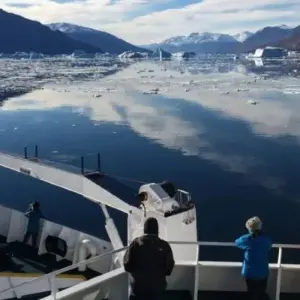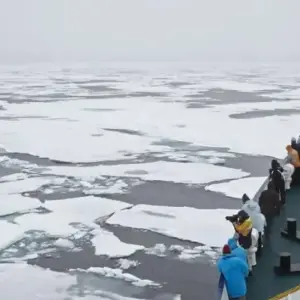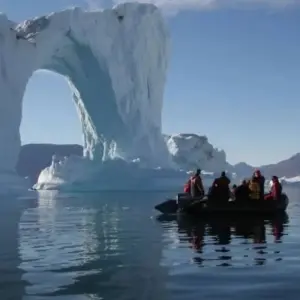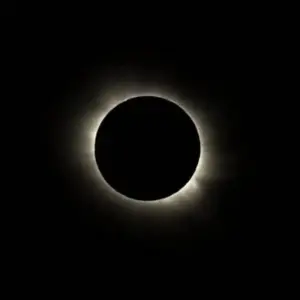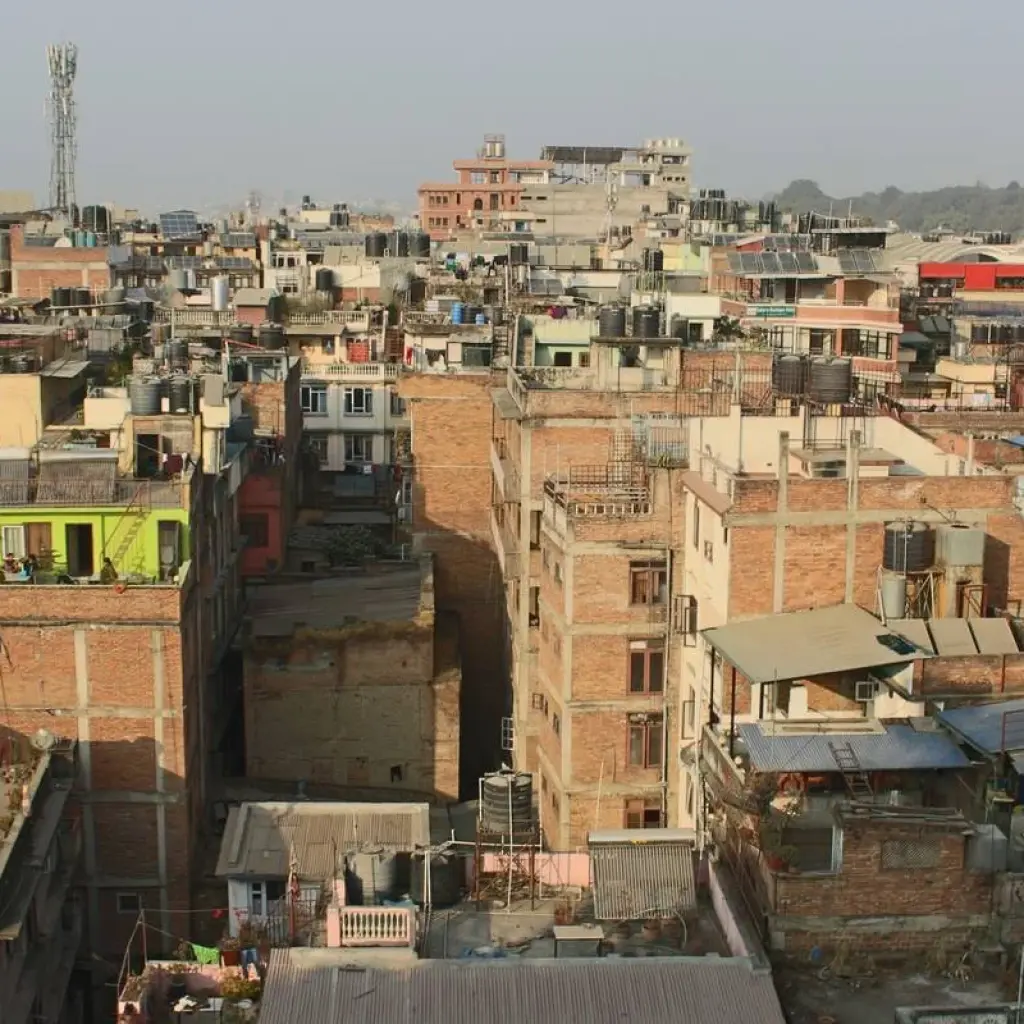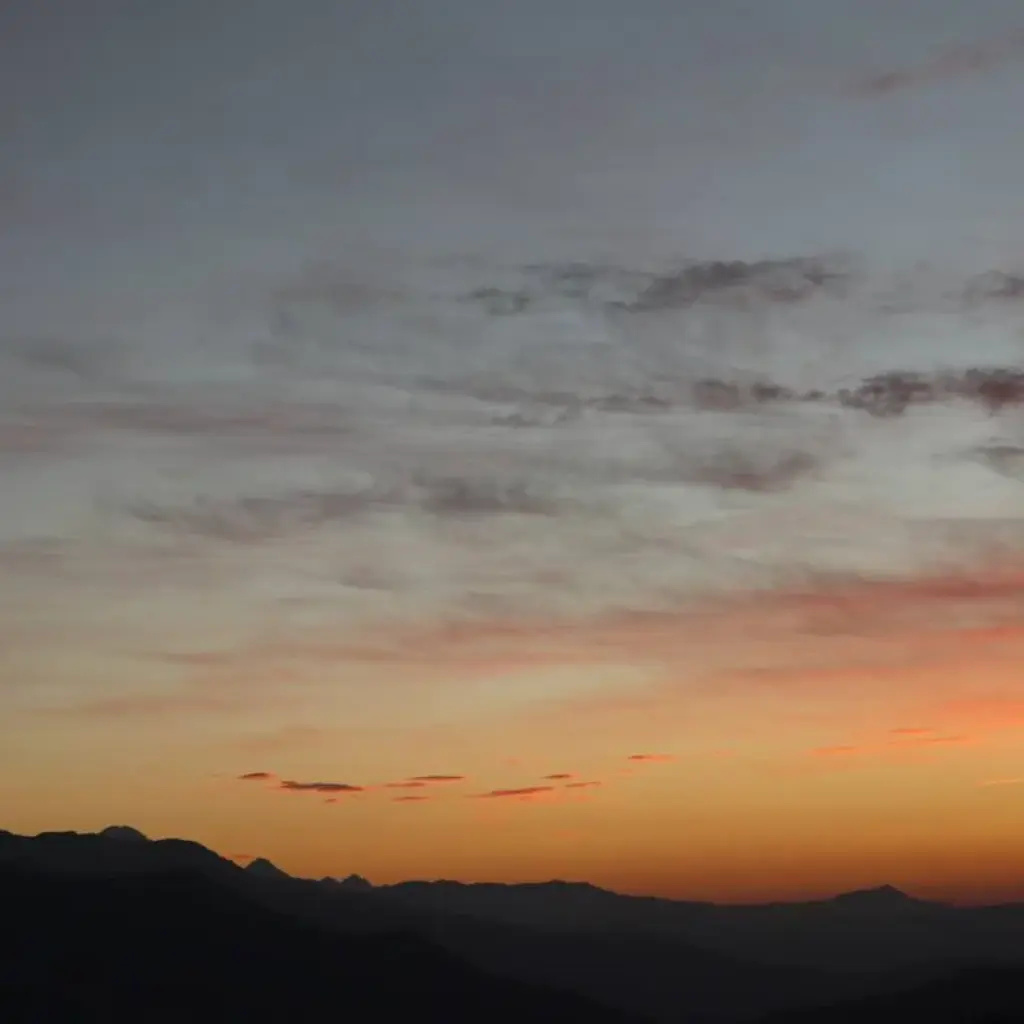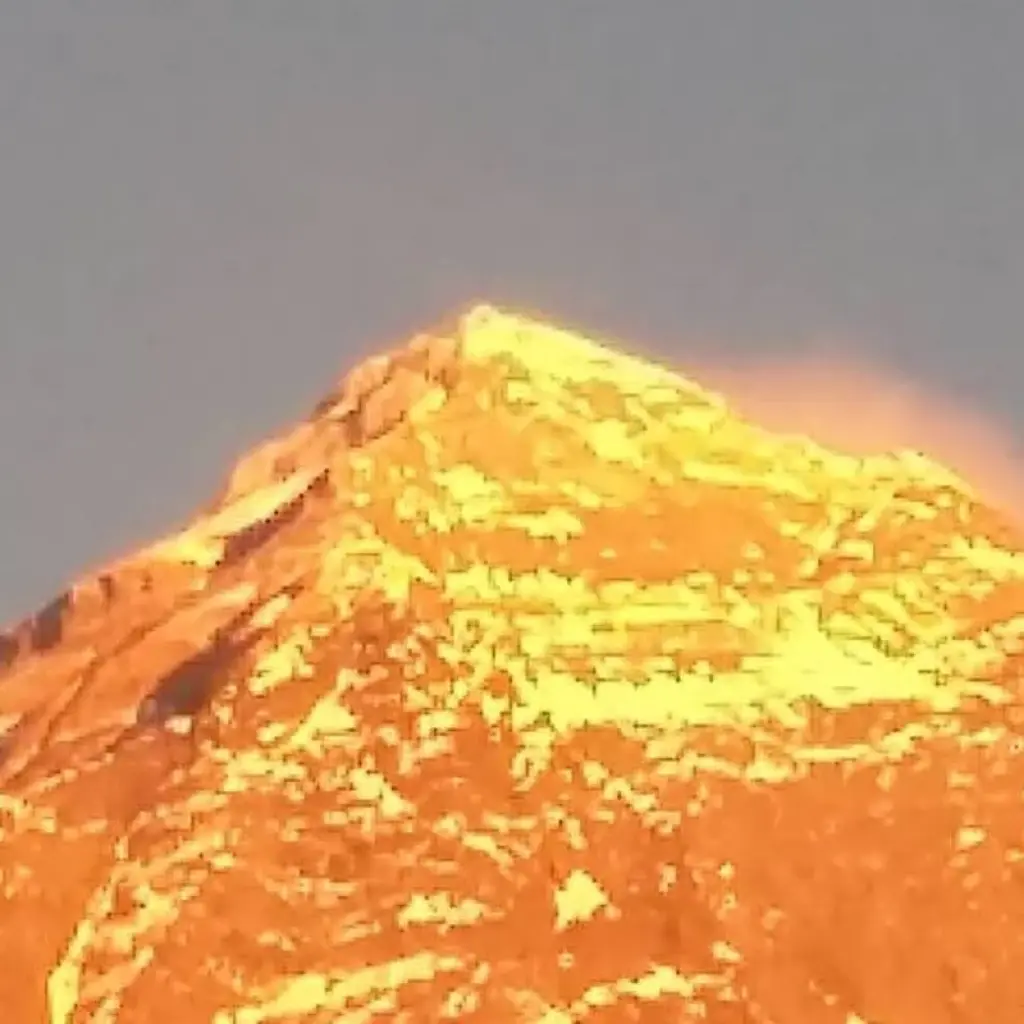You land in Longyearbyen, the administrative center of Svalbard, the largest island in the Svalbard archipelago. Enjoy a walk through the former mining town, whose parish church and the Svalbard Museum are fascinating sights. Although the landscape appears barren, more than a hundred plant species have been counted here. In the early evening, the ship leaves Isfjorden, where you may see the first minke whale of your trip.
Itinerary
14 jours (13 nuits) Eclipse solaire 2026 via l'est du Groenland, de Longyearbyen à Akureyri
Vivez un voyage arctique exceptionnel à travers le Svalbard et le Groenland qui, outre l'observation d'une éclipse solaire, vous permettra de faire de longues randonnées hors des sentiers battus. Découvrez des zones de premier choix pour observer des ours polaires, des renards arctiques, différentes espèces de phoques et une multitude de baleines.
Informations sur l'éclipse :
70,878 latitude nord, 27,286 longitude ouest (Øfjord à Scoresby Sund) Durée de l'éclipse : 2 heures, 1 minute Durée de la totalité : 2 minutes, 17 secondes GMT (= temps Ittoqqortoormiit moins 1 heure)
Début de l'éclipse : 04:33
Début de la totalité : 05:33
Maximum. Éclipse maximale : 05:35 (Alt. 25.0)
Fin de la totalité : 05:36
Fin de l'éclipse : 06h34
Tour program
Jour 1 : La plus grande ville, la plus grande île
Jour 2 : Observatoire de Sabine et Raudfjord
In 1823, the Irish scientist, soldier and explorer Edward Sabine ran an observatory on Indre Norskøya in the northwest of Svalbard. Using a pendulum to study gravity, he proposed a project to measure the meridians (lines of longitude through the poles) on Spitsbergen, the aim of which was to determine the curvature of the earth. You will try to get to Sabinehaugen, where he made his observations. You will then sail into the Raudfjord on the north coast of Spitsbergen, where you will see an extensive fjord with many glaciers - and perhaps even be visited by ringed seals, bearded seals and polar bears. The cliffs and coastline of this fjord are also home to thriving seabird colonies.
Jour 3-4 : Poursuite du voyage vers l'est du Groenland
Depending on the weather, you may be able to see the jagged edge of the East Greenland sea ice flashing in front of you. Keep an eye out for whales and migrating seabirds.
Jour 5 : Toundra, montagnes et icebergs
As you approach Greenland, you can sail through the sea ice into Foster Bay and land at Myggebugten. Behind the old hunter's hut, where Norwegian trappers hunted polar bears and Arctic foxes in the first half of the 20th century, stretches a vast tundra populated by musk oxen, while geese swim on the small lakes. From here we drive through the Kaiser Franz Josef Fjord, which is surrounded by towering mountains and bright icebergs inside. Now is your first long hike (6-7 hours). It starts at Myggbukta station, leads into Badlanddal and then south to Fangsthytte at Cape Bennet. A Zodiac sails ahead of the hiking group and parallel to the coast to keep an eye out for bears. You then sail through the Kaiser Franz Josef Fjord, which is surrounded by towering mountains and glowing icebergs inside.
Jour 6 : Îles dans le détroit de l'Antarctique
You reach the Devil's Castle, a mountain with a rich geological history. On the other side of the fjord is Blomsterbugt and the planned landing site. In the afternoon, you will sail into the Antarctic Sound to reach the islands of Ruth, Maria and Ella. Maria is the most likely place for a landing.
Jour 7 : Les hauts sommets de l'Alpefjord
In the morning, you enter Segelsällskapets Fjord, on the north side of which lie the striped slopes of the Berzelius Mountains. You land on the southern shore, where ancient sediment formations lie right at your feet. A hike takes you close to a small lake with a good chance of seeing musk oxen, Arctic hares and ptarmigans. In the afternoon, the ship sails into the Alpefjord, which owes its name to the pointed peaks that tower around it. You can then take a Zodiac cruise around the Gully Glacier, which once blocked access to the interior of these waters. If you venture deep into the fjord, you will experience a true Greenlandic adventure.
Jour 8 : Les curiosités de l'automne arctique
The first half of the day is spent in Antarctic Havn, a vast valley where you can observe groups of musk oxen. At this time of year, the sparse vegetation has the fiery colors of autumn.
Jour 9 : Le plus grand fjord du monde
Now you reach Scoresby Sund and travel along the glaciated Volquart Boons Kyst. You can also take a Zodiac cruise along one of the glacier fronts and visit the basalt columns and ice formations of Vikingebugt. In the afternoon we sail along the east coast of Milne Land between a multitude of huge icebergs. If a landing in Charcot Havn is possible, take a walk to Charcot Glacier before continuing to Bjørneøer.
Jour 10 : Eclipse solaire totale
In the morning you take a Zodiac cruise near Sorte Ø, surrounded by icebergs. Their stark blue-white color contrasts sharply with the sediment slopes nearby. At midday, the ship positions itself in the middle of the moon's shadow in the Øfjord. In the afternoon, you can watch the solar eclipse either from the ship or from one of the nearby shores.
Jour 11 : Icebergs gigantesques, lièvres arctiques
In the morning you will encounter colossal icebergs, some of which are over 100 meters high and more than a kilometer long. Then we land near Sydkap, from where you have a beautiful view of Hall Bredning and Arctic hares. The long hike takes you from Sydkap to Satakajik and shows you the remains of Thule winter houses built from whale vertebrae. In the evening you sail into the Øfjord.
Jour 12 : Installation à Scoresby Sound
Today you will make a tundra landing on Liverpool Land, in Hurry Inlet. In the afternoon you will stop in Ittoqqortoormiit, the largest settlement in Scoresby Sund with a population of around four hundred. At the post office you can buy stamps for your postcards or simply stroll around and admire the sled dogs and the dried skins of seals and musk oxen. In the afternoon, we sail south past the picturesque landscapes of the Blosseville coast.
Jour 13 : Vie marine sur la route de l'Islande
A day at sea gives you the opportunity to observe whales and seabirds
Jour 14 : Fin du voyage à Akureyri
Even the greatest adventures come to an end. You disembark in Akureyri, where you can take a chartered bus (six-hour trip, which must be booked in advance) to the bus stop at the Harpa Concert Hall in Austurbakki, Reykjavík, if you wish.
Tour Details
accommodation
Voyage à bord du navire indiqué selon la cabine réservée
flights
none
guide
Le programme comprend des conférences données par des naturalistes connus et des visites guidées par des membres expérimentés de l'expédition.
insurance
meals
Tous les repas pendant toute la durée du voyage sont inclus à bord du navire, y compris les collations, le café et le thé. Les boissons sont en supplément
others
Transfert pour la navette de bus entre Akureyri (bateau) et l'arrêt de bus Harpa Concert Hall and Conference Centre à Austurbakki, Reykjavik (6 heures).
Toutes les excursions et activités à terre pendant toute la durée du voyage sont effectuées en Zodiac.
Utilisation gratuite de bottes en caoutchouc et de raquettes à neige.
Tous les autres frais de service et taxes portuaires sont inclus dans l'ensemble du programme.
Les taxes AECO et les taxes gouvernementales sont également incluses.
Matériel complet fourni avant le départ
Arrangements avant et après l'atterrissage
Frais de passeport et de visa
Taxes gouvernementales d'arrivée et de départ
Repas à terre
Frais d'excédent de bagages et toutes les dépenses personnelles telles que blanchisserie, bar, boissons et frais de télécommunications
Les pourboires habituels à la fin du voyage pour les stewards et autres personnels de service à bord.
transport
MS Hondius/MS Plancius
Good to know
Currency
Norwegian Krone
Svalbard
Plugs and adapters

Plug type C

Plug type E




